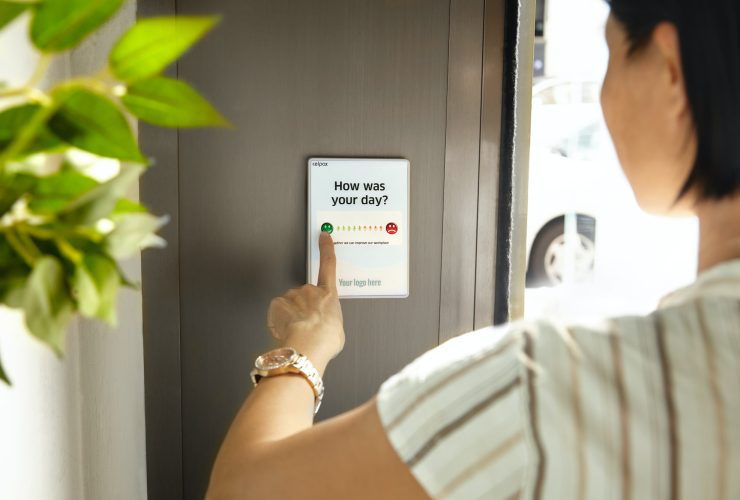The Flywheel Effect: How to Leverage Marketing to Improve Practice Growth
Warren Buffett’s career had humble beginnings.
At the age of 7, the greatest investor of all time had two income streams: a humble paper route and re-selling Coke bottles for a few cents apiece. By the age of 11, he had scraped together enough money together to buy a modest six shares of stock.
Fast-forward to today, and Buffett is (in a way) still selling Coke bottles.
His company owns 9.3% of Coca-Cola, a stake that’s worth $22 billion.
Buffett is now worth $104 billion, making him the seventh-richest person on the planet.
At first glance, Buffett’s investing success may seem impossible: how does someone turn six shares of stock into a hundred-billion-dollar fortune?
If you look closer, though, his success is relatively simple. In fact, his methods can be applied in nearly any area of your life.
Nearly all of Buffett’s success came from understanding one simple principle: the Flywheel Effect.
What is a Flywheel?
In engineering, a flywheel is a mechanical device designed to use the conservation of angular momentum to efficiently store rotational energy.

In simple terms, a flywheel is a system that helps you gain momentum and keep that momentum over time, even when the source of energy that got the flywheel spinning in the first place is no longer available.
Flywheels are commonly used in engines to sustain performance because they provide continuous power output long after the force that sets them in motion stops.
Why Do Flywheels Work?
A flywheel is effective at storing energy because of Newton’s First Law: An object in motion tends to stay in motion unless acted upon by an outside force.
Flywheels are great at storing energy, mostly because they are incredibly heavy. The problem with a flywheel is that its weight makes it very difficult to put it into motion. Flywheels require a lot of energy to start spinning.
When you first try to spin a flywheel, it will spin very slowly. However, as the flywheel starts spinning faster, the energy it produces contributes to the overall system, which makes it easier to spin. The faster it spins, the less energy it takes to keep it spinning.
So while it’s difficult to set a flywheel into motion, once it starts spinning it’s easier to make it spin faster and faster.
Funnels vs. Flywheels in Marketing
Ok, but what do engineering and physics have to do with your practice’s marketing?
Let’s start by looking at a foundational concept in marketing: the funnel.
A marketing funnel is an idea that most customers’ journeys follow a similar path: from awareness of your product or service to consideration, and finally to conversion (also called a purchase).
The top of the funnel is wide: there are a lot of people that may be aware of your product or service.
As people research their options (and alternatives), your audience narrows: some people will decide that they aren’t going to purchase at all, while others will choose a competitor.
As the relationship gets more serious, your audience narrows further: not everyone who considers you will make a purchase. Some will decide your services are too expensive, while others will choose a competitor.

The funnel used to be the golden rule of marketing – and it still has value – but things are changing.
The Flywheel Effect: All About Re-Investment
A funnel is a valuable heuristic to understand your target customers’ journeys. But if you want your business to be successful (read: to grow), the Flywheel Effect is a much more important concept to master.
Here’s the thing: you can repeat the funnel process a million times over, but it won’t necessarily lead to growth.
If you want to grow your business, you have to adopt the flywheel.
A marketing flywheel is more valuable than a marketing funnel.
Why? Because, like a mechanical flywheel, it provides continuous power output long after the force that starts it spinning goes away.
A core concept in a marketing flywheel is reinvestment.
To grow, you have to build upon your successes.
Remember our friend Warren Buffett? Reinvestment is the #1 reason why he has been so successful.
Recall that his net worth of $104 billion. That’s a crazy amount of money. Now consider this statistic:
99% of Warren Buffett’s net worth came after his 50th birthday. 97% alone came after he turned 65.
What if he had continued to earn an outstanding 22% per year but had quit investing when he turned 60 to retire and play golf instead? Would his net worth still be 104 billion?
Nope: $11.9 million.

That’s the Flywheel Effect at work.
Buffett continued to re-invest profits back into his businesses until he had built an empire. Jeff Bezos did the same thing at Amazon. So have countless uber-successful people and businesses.
That’s because they understood the power of compounding – of reinvesting assets back into the business. They took their successes (profitable investments, competitive advantages, etc) and reinvested those wins back into the flywheel. This got the flywheel spinning faster and faster.
More importantly, this made their Flywheel easier to spin over time.
You don’t have to do this on the scale of a Buffett or a Bezos to be successful. You can apply the same principles to your practice growth, regardless of whether you employ five people or 500.
In the Practice Growth Flywheel, you use the momentum of your current marketing (profitable advertising, happy patients, rave reviews) to re-invest in future marketing, which drives referrals and repeat sales.
It’s Time to Rethink Profit
Most doctors struggle to build a flywheel because they tend to think about profit the wrong way.
Perhaps they take some profit from their business off the table and put it in their pockets. This is nice for a while. But at the end of the day, they’re still trading their time for dollars.
Maybe a doctor hires additional staff members as their volume grows. This might lighten the load in the office, but it doesn’t necessarily translate into more patients coming in the door.
Perhaps the practice expands to a second location to service more patients. This is growth – and it’s good – but it’s an incredibly costly and time-consuming endeavor.
The problem with all of these approaches is that they’re linear. They don’t scale.
What if we thought about profit in a different way?
What if, for every extra $1 in profit, a doctor re-invested 50% back into the strategies that earned those dollars in the first place?
Let’s say that your marketing brings in 2X in revenue for every dollar you spend.
(If you’re a high-volume surgeon with healthy margins and lots of demand, this is pretty conservative. Some of our clients see 10X revenue for every dollar they spend on marketing.)
$100 invested in marketing brings in a revenue of $200 – a $100 profit.
Rather than taking $50 for yourself, take $50 and re-invest it on top of your current marketing spend. $50 may not seem like much, but that’s a 50% increase in budget.
All things being equal, a 50% larger budget = 50% more patients = 50% revenue. Now, your $150 in ad spend leads to $300 in revenue – a $150 profit. If you can take as little profit off the table as possible and reinvest as much as you can, you’ll grow faster.
Let’s say you stick to the 50% reinvestment rule and reinvest $75 back into your marketing. Your marketing budget has now gone from $100 to $225. That means your profit has gone from $200 to $450. That’s more than 2X growth – just by capitalizing on what’s working.
This reinvestment has a trickle-down effect. Reinvestment means more revenue, yes, but it also means more patients. That means more reviews, more word-of-mouth marketing, and more buzz for your practice.
Keep reinvesting and you can grow your revenue exponentially. With more revenue, you can hire more staff, invest in new technologies, and expand to new locations, all while pocketing some for yourself.
That’s the Flywheel Effect at work: it may have been difficult to get that flywheel spinning, but as your successes build upon each other, it becomes easier and easier.
Why the Flywheel Approach is Perfect for Doctors
The flywheel approach is perfect for doctors because many doctors are just too busy.
If a doctor doesn’t have a dedicated marketing staff, that means they have to deal with marketing and promotion on top of patient care. They come to see marketing as a burden, a necessary evil – something to sustain them so that they can do the “real” work of treating patients.
This is because most physicians engage in marketing to sustain performance, not to grow. With this approach, marketing can become an addictive drug: doctors can’t stop marketing or else their patient pipeline will dry up!
But when doctors adopt the Practice Growth Flywheel, they can spend less time worrying about marketing because the systems they have created help market themselves.
Rather than distracting physicians from the mission-critical task of practicing medicine, the Practice Growth Flywheel allows them to focus on practicing medicine while the rest takes care of itself. They can finally focus on their unique strengths (practicing medicine) without sacrificing in other areas of their business.
If you want to grow your practice, you have to get serious about re-investment.
When you make profits in one area, your first step should be to use the profits to invest more heavily in that area. Choose reinvestment and growth, not stasis and “maintenance.”
Once everything is running on autopilot and you’re hitting your goals with one marketing channel, you can then shift resources to new marketing channels.
The goal is to have a wide variety of marketing channels firing on all cylinders and operating on autopilot. The ultimate goal is diversification so that no one algorithm change or external influence will negatively impact your bottom line.
Building Your Practice Flywheel: Do You Have a Compounding Mindset?
It’s time to get your Practice Growth Flywheel spinning. If you have a compounding mindset, then over time your flywheel will take care of the rest, driving more revenue for your practice without much additional effort on your end.
One thing all successful practices have in common is that they are dissatisfied with the status quo. They adopt Amazon’s “Day 1″ mindset. As Jeff Bezos put it in his Shareholder Letter, answered: “It’s always Day 1. Day 2 is stasis. Followed by irrelevance. Followed by excruciating, painful decline. Followed by death.”
It’s always Day 1 for your practice.
If you can embrace a mindset of reinvestment, where every action and activity contributes to your flywheel’s momentum, your practice can reach new heights.
If you can build upon your current successes, your future successes will become easier.
If you can focus on Flywheels over Funnels, you can reach more patients than ever before.
If you can grow slowly at first, you can grow much faster in the future.
It all starts with the flywheel.








